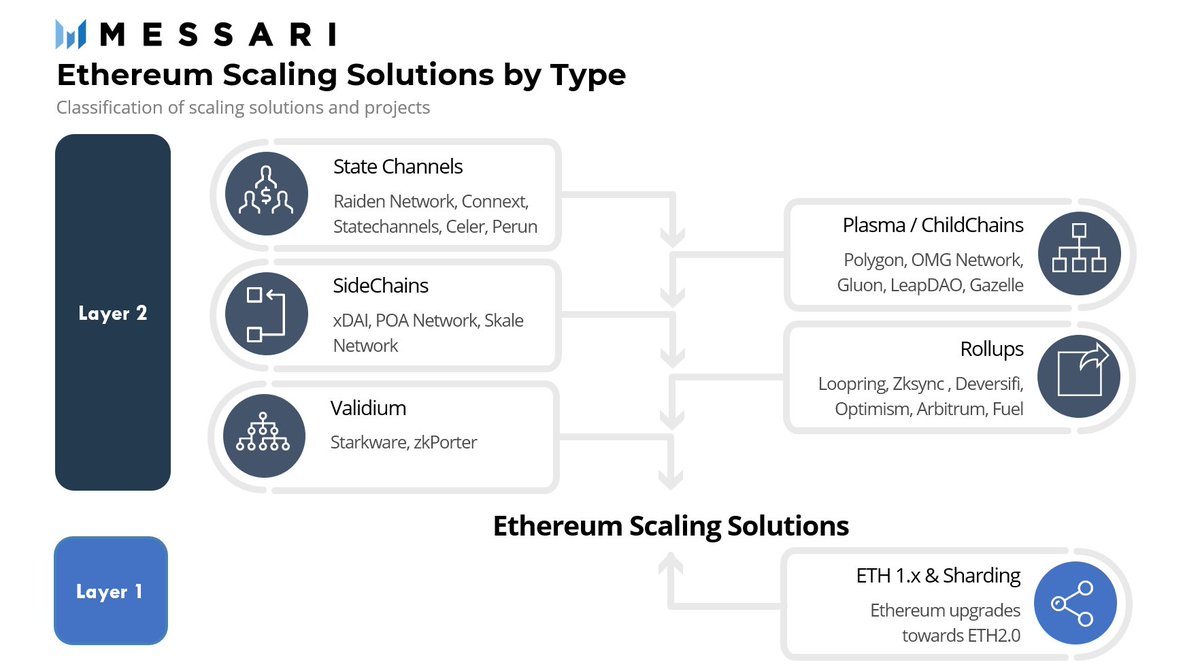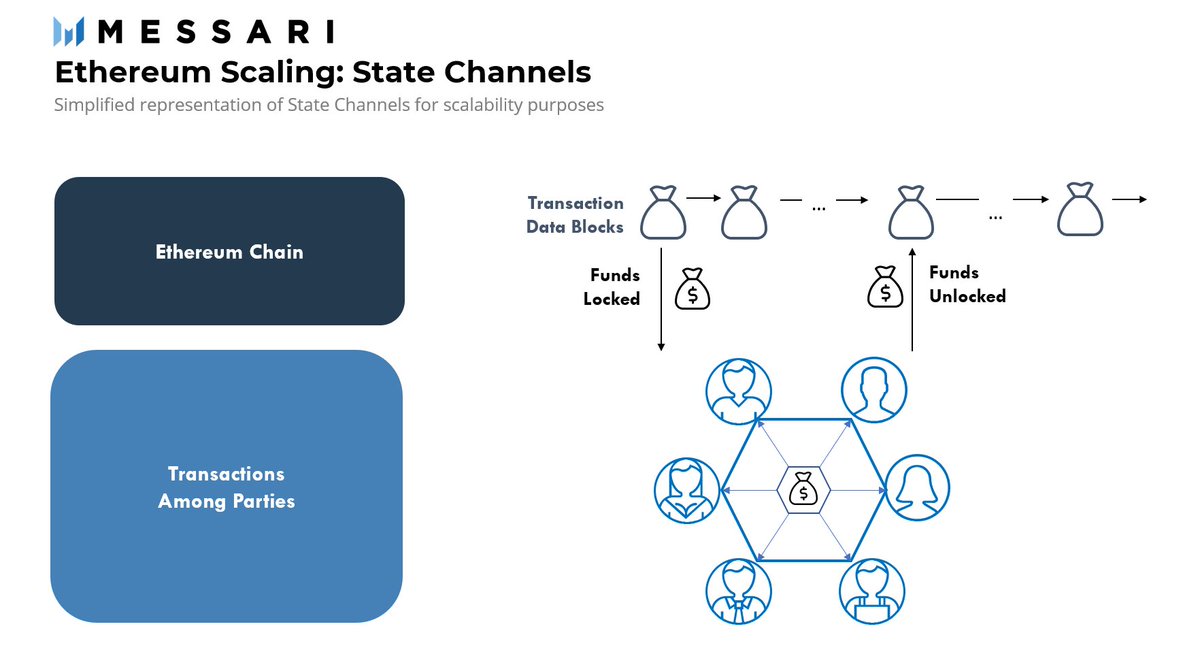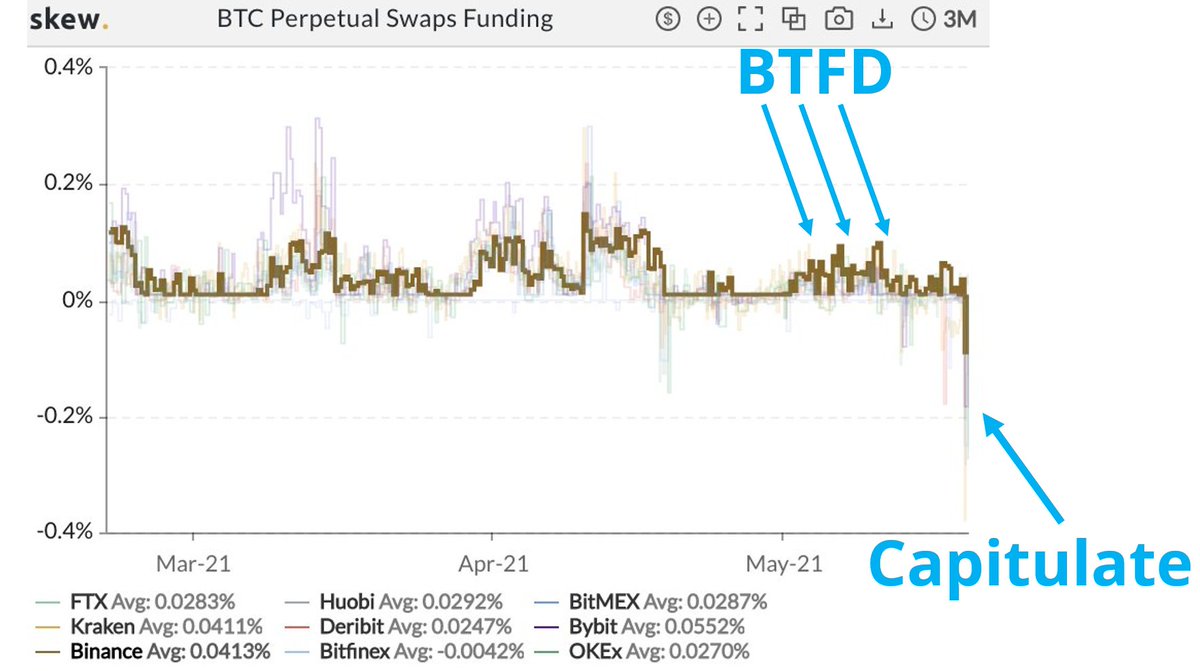The problem with $ETH is that the more users there are, the slower and more expensive it gets. ETH's continued dominance as the de-facto smart contract layer depends on its ability to scale.
Let me ELI5 the scaling solutions & projects. 1/
Let me ELI5 the scaling solutions & projects. 1/

@ethereum Power users: Even if you don't know about ZK-Rollups, Sharding, or Plasma, the future of the most active blockchain depends on it.
@VitalikButerin has been thinking about it for 7 years
2/
@VitalikButerin has been thinking about it for 7 years
2/

Scaling is a priority for ETH. Miners have been cashing in, seeing a 50% increase in revenues compared to the highs of 2017.
For users, ETH can be prohibitively expensive. This has been terrific for competitors like #BSC, $SOL and $DOT
3/
For users, ETH can be prohibitively expensive. This has been terrific for competitors like #BSC, $SOL and $DOT
3/

There are 2 types of scaling solutions: Layer 1 (onchain, everything on ETH) and Layer 2 (data and computation done offchain). The different types are
1. State Channels
2. Plasma / Childchains
3. Sidechains
4. Rollups
5. Validium
6. Sharding (part of ETH2)
4/11
1. State Channels
2. Plasma / Childchains
3. Sidechains
4. Rollups
5. Validium
6. Sharding (part of ETH2)
4/11
For a list of projects using these techs, see the report messari.io/article/ecosys…
Let's go through a few of the types... 5/11
Let's go through a few of the types... 5/11
State Channels: allow users to transact many times off-chain while only submitting two transactions to the Ethereum network -one at the time of opening and one at the time of closing the channel.
6/11
6/11

Sidechains: are a separate blockchain running alongside and communicating with Ethereum. It’s connected to Ethereum using a peg with another token, creating a two-way bridge.
7/11
7/11

Rollups allow thousands of transactions to be bundled in a single Rollup block.
We cover Optimistic Rollups and ZK Rollups in the report messari.io/article/ecosys…
8/11
We cover Optimistic Rollups and ZK Rollups in the report messari.io/article/ecosys…
8/11

Sharding simply means a network can be split into many rails to process transactions in parallel. There are also no deposits or funds staked in shards, as it’s part of the mainchain
9/11
9/11

ETH is migrating to ETH2.0, as complex as sailing a boat while trying to build a new boat attached to it.
Importantly, it's moving from PoW to PoS. Here's how they compare:
10/11
Importantly, it's moving from PoW to PoS. Here's how they compare:
10/11

While Ethereum is working towards ETH2, projects are concurrently offering a hybrid of technologies to provide the best scaling solutions.
Composability and network effects will create a multiper effect on scaling.
Read more about the ecosystem:
messari.io/article/ecosys…
11/11
Composability and network effects will create a multiper effect on scaling.
Read more about the ecosystem:
messari.io/article/ecosys…
11/11
• • •
Missing some Tweet in this thread? You can try to
force a refresh














